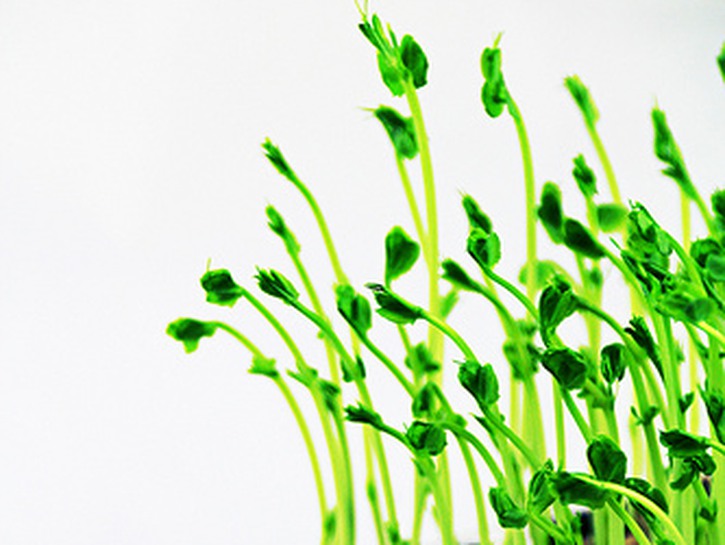Trying to add something savory and healthy to your dinner? You needn’t look any further than microgreens to accomplish these feats; they’re loaded with nutrients, health benefits, and will add flavor to your dinner or side dishes. You can even grow them from the comfort of your own home and use them at your leisure! But, what are microgreens exactly and just what kind of health benefits are we talking about? We’re going to answer all of your burning questions about these helpful little greens and why you should work them into your diet.
What Are Microgreens?

You have no doubt visited your favorite restaurant more than once and have seen microgreens sprinkled onto entrees or an assortment of them gathered in salads. Even if you’re technically unfamiliar with the baby plants, they’ve definitely crept into your life at one point or another.
Microgreens are young, edible greens that derive from vegetable or herb seeds. They’re fairly small, though not as small as sprouts. In fact, one of the big differences between a sprout and a microgreen is their size. When the seed starts to grow, you’re looking at a sprout, but when the sprout starts to grow, you’re looking at a microgreen.
Microgreens vary in their flavor and though they share many similar health benefits, various microgreens differ in that area as well. Some of the more popular microgreens would be cilantro, broccoli, kale, beets, basil, arugula, spinach, celery, dill, and lettuce.
Nutritional And Health Value

Scientists have conducted research into the benefits of microgreens but the nutritional value of an individual microgreen is limited. However, many papers have been published regarding the overall health of microgreens as a whole.
For example, microgreens belonging to the Brassicaceae (broccoli, cauliflower, brussel sprouts, arugula, cabbage) family have been proven to be loaded with macroelements like potassium, phosphorus, and calcium. There were also trace elements like iron, zinc, and manganese. Additional studies have been conducted on broccoli microgreens which concluded that they are rich in nutrients.
What’s more, research into microgreens compared with matured vegetables concluded that microgreens actually possess more minerals and nutrients than their mature counterpart.
Further research published in Journal of Agricultural and Food Chemistry studied the nutrients and minerals of 25 microgreens and discovered that they were loaded with vitamins. Of the nutrients they found, microgreens were full of vitamin C, which has been linked to protecting against scurvy and reducing the risk of bad cholesterol. Studies have also shown that vitamin K1 was discovered in microgreens and K1 maintains healthy blood pressure, bone health, and improved memory. Vitamin E was also largely packed into these little guys and that specific vitamin helps with our immune systems, reducing the effects of Alzheimer’s disease, and has anti-cancer properties.
Potential Risks

Microgreens are considered to be safe, healthy eating by most, but there is one major thing that you should be aware of. Studies have confirmed that E.Coli has been discovered in sprouts and since the sprout is so close to the microgreen, the same risk runs. A study conducted showed that while radish microgreens had significantly fewer levels of E.Coli when compared to sprouts, the bacteria was still discovered in the microgreen.
It’s recommended that you thoroughly wash your microgreens before consumption and purchase microgreen seeds from stores that you know and trust.
Overall, microgreens are considered to be a good source of vitamins, nutrients, and minerals. You can easily incorporate them into your diet by sprinkling them onto food or mixing them into side dishes like salads. Just be sure you obtain your microgreen seeds from reputable sources and thoroughly wash them before you eat.
